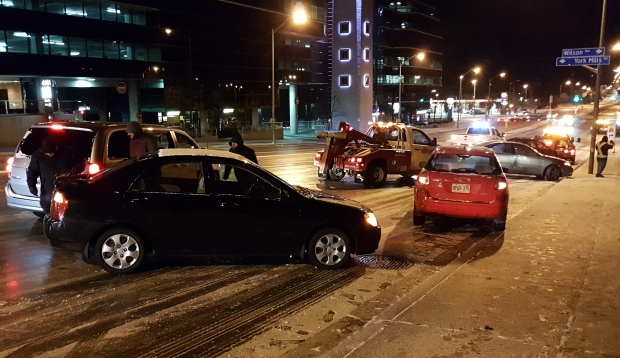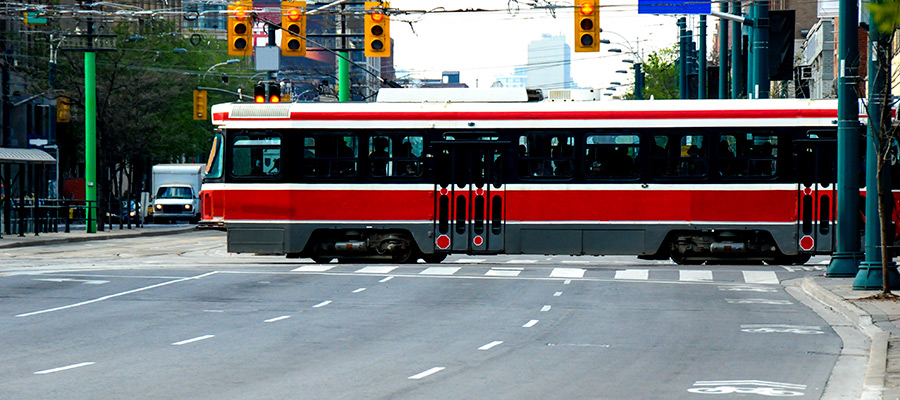
Temperature drop brings 63 collisions in the GTA
Toronto police responded to 63 collisions in last 12 hours, many of them single-vehicle
CBC News Posted: Nov 10, 2017 6:05 AM ETLast Updated: Nov 10, 2017 7:57 AM ET
The sudden drop created problems for drivers. Const. Clint Stibbe, with Toronto police traffic services, said that officers responded to some 63 collisions over a 12-hour period. Some 45 collisions involved reports of property damage, while 18 included personal injuries.
Most of the incidents occurred in the northwestern, northern and northeastern parts of the city near the 401.
Read more about collisions and current driving conditions, here.
Winter driving tips: How should you prepare a vehicle for driving under winter conditions?
Driving in winter weather – snow, ice, wet and cold – creates a great challenge for vehicles and drivers. Keeping your vehicle in good technical repair reduces your overall chances for any mishap or disaster while driving – particularly in winter weather. To prepare your vehicle for winter driving give it a complete checkup.
Look for the following:
Electrical system
Battery – recharge or replace if the battery is weak. Also have the charging system checked.
Ignition – check for damaged ignition wires and cracks in the distributor cap.
Lights – check all lights (headlights, side lights, emergency flashers, directional lights, taillights, brake lights and parking lights) for proper functioning.
Brakes
Check brakes and adjust to ensure equal braking.
Tires
The traction between tires and roadway determines how well a vehicle rides, turns and stops, and is crucial for safe driving in winter. Proper tire selection is very important.
Use all-season radial tires only in areas that receive only light snowfall.
Use snow tires in areas that receive heavy snowfall.
Use chains on all four wheels when you expect severe snow and icy roads.
Check with your local Department or Ministry of Transportation office to see if the use of tire chains is legal in the region through which you are planning to drive.
Check tire pressure and if necessary restore it to levels recommended by the vehicle manufacturer. The pressure drops about 1 psi for every 5°C (9°F) drop in temperature.
Do not mix radial tires with other types.
Check tire balance and correct if necessary.
Check wheel alignment and correct if necessary.
Exhaust system
Check the exhaust system for leaks. A properly sealed exhaust system reduces the risk for carbon monoxide poisoning.
Keep the window in your vehicle slightly open when you’re stuck in snow, and run the engine and heater to keep warm.
Keep the exhaust pipe clear of snow. A blocked pipe can force carbon monoxide back into the car interior.
Heating/cooling system
Check the radiator and hoses for leaks.
Ensure that your vehicle always has a sufficient amount of antifreeze rated for the coldest weather.
Check the defrosters (front and back) to make sure they are working efficiently.
Windshield wipers
Ensure that windshield wipers function efficiently. Replace them if they are old or worn.
Fill the washer container with an antifreeze fluid and top it up frequently.
Fuel
Fill up the fuel tank before you leave on your trip.
Do not let the fuel level get too low – the driving time to the next gas station may take much longer than you ever expected, and if you get stuck, the car engine will be your only source of heat.
For more information on winter driving, please visit Canadian Centre for Occupational Health and Safety site:
http://www.ccohs.ca/oshanswers/safety_haz/icesnow.html
More information about traffic accidents, here.
Contact Strype Injury Lawyers for a free car collision case evaluation.

